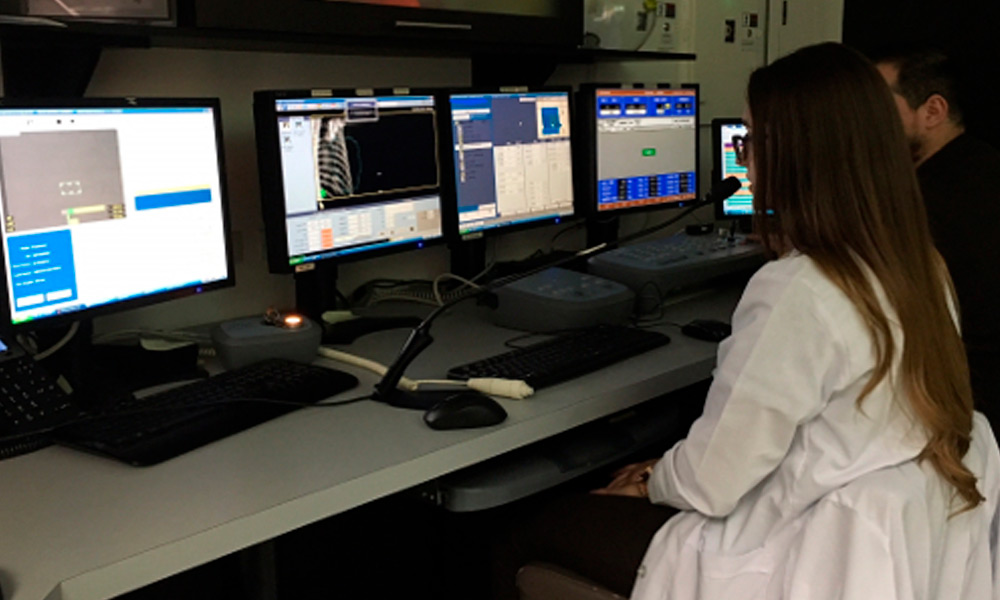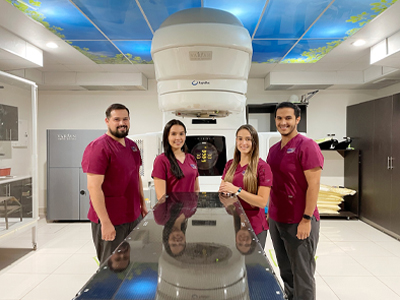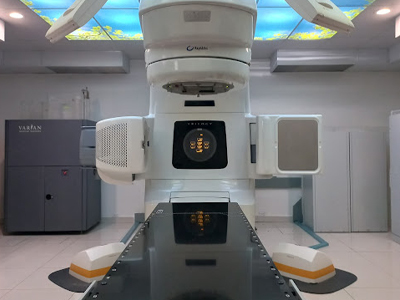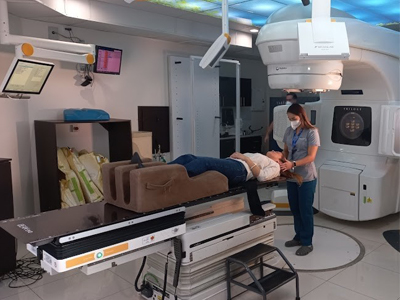4D Motion Compensatory Radiotherapy

4D Motion Compensatory Radiotherapy, also known as “Fourth Dimensional Radiotherapy”, technology used by Varian's RPM system.
This modality allows monitoring, while taking computed tomography images, in the various phases of the respiratory cycle and in this way doctors can choose the most appropriate moment in the patient's cycle to activate the treatment.
The equipment allows us to optimize the previous time in the application of the treatments that are currently carried out, since it has the necessary technology to protect the organs around the area to be irradiated, and also modulate the intensity through the integrated multi-leaf collimator (MLC) system. )
Why is 4D Radiotherapy important?
Many tumors, especially in organs that move within the body (lungs, breast, liver, and to some extent the prostate), change position during the respiratory cycle or due to other movements.
If radiotherapy does not take this movement into account, the radiation may not precisely target the tumor or may damage surrounding healthy tissues.
How does it work?
- Advanced imaging techniques are used to capture the tumor’s movement in real time, such as 4D CT scans or dynamic MRI.
- During planning, the range of tumor movement is mapped.
- The radiotherapy machine adjusts the direction, intensity, and timing of the radiation beams to track or compensate for that movement.
- This way, the radiation is delivered exactly to the right place, even if the tumor shifts.

Benefits and Applications
Benefits
Greater precision in dose delivery, reducing radiation to healthy tissues.
It allows for the treatment of tumors that were previously difficult to manage due to their movement.
It reduces side effects and improves treatment effectiveness
Applications
Breast cancer, with maximum protection of healthy tissue near the treatment area such as the heart, lungs, and mediastinum.
Lung cancer, where breathing causes the tumor to move constantly.
Liver and pancreatic cancer.
It can also be applied to prostate tumors and those in other movable organs.
After radiotherapy, you should undergo regular check-ups and follow-ups with your treating physician.
Using techniques like 4D Radiotherapy, radiation oncologists are maximizing the capabilities of radiotherapy to destroy cancer while minimizing its effect on healthy tissues and organs, as well as the side effects of the treatment itself.




